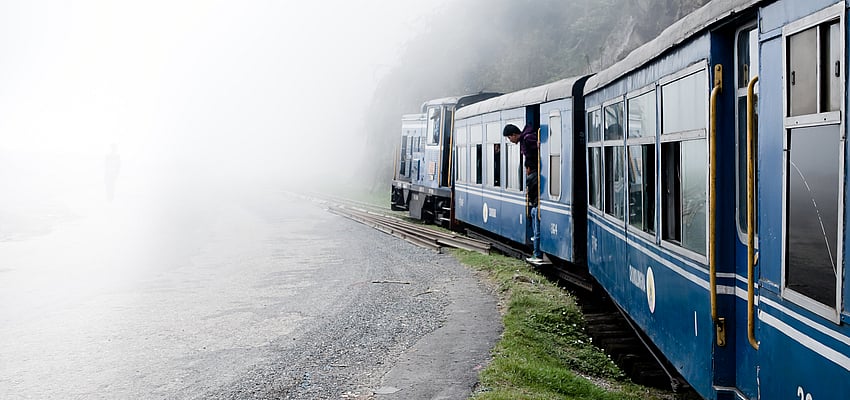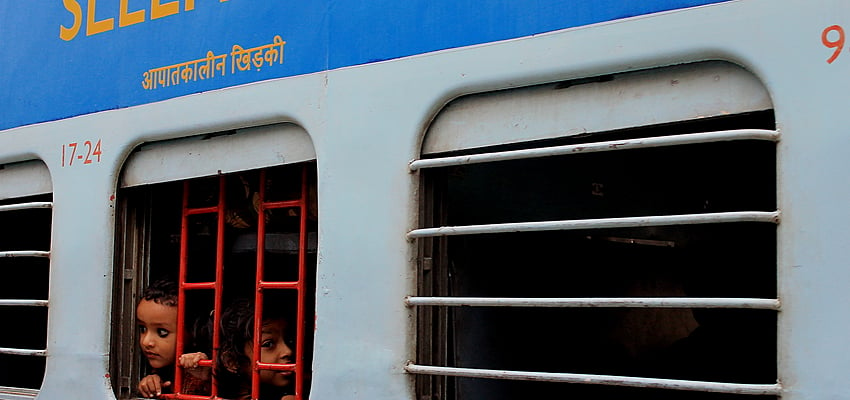


During my two-month trip to India, which took me from Rajasthan to the Taj Mahal and from New Delhi to Goa, I had many occasions to take the train. To avoid your experience being a chaotic one – as mine was! – here are a few practical tips (choice of travel class, ticket purchases, etc.) designed to ensure your Indian train journey goes smoothly ('smoothly' in the Indian sense that is!).
If there's one thing that goes without saying, it's that if you don't used the trains when you're in India, you haven't really visited the country! If you want an unforgettable and unique experience therefore, join the millions of Indians who use the trains each day!
Before buying your ticket, you need to decide which travel class best matches your budget and the level of comfort you require. Indians do things in a slightly more complicated way than others: Indian Railways, which is India's rail network, offers eight different travel classes in total!
Here's a guide to each of them, from the most basic to the most luxurious, together with tips and advice:
- 2nd Class Seats (2S and II): the tickets cost hardly anything, but this class gets extremely packed. Even with a valid ticket, there's no guarantee you'll get a seat. As a personal anecdote, I opted to lie down on the iron bars of the luggage rack when I travelled in this class. As you've no doubt already gathered, this is one travel class to be avoided!
- Sleeper Class (SL): this class provides you with a sleeping birth, and it is not expensive either. The sleeping spaces are arranged like triple bunks, three levels high, and with no curtains or partitions between them. Go for the top bunk if possible: Indians have the habit of sitting on the lower one to chat, even if it happens to be yours. This is also an issue with the middle bunk as it cannot be folded down when there are people sitting on the bottom one!

- AC Chair Class (CC): fairly comfortable seats and air-conditioned carriages.
- AC Executive Chair Class (EC): seats are arranged in pairs and more comfortable, and the carriages are air-conditioned. The ticket price includes a meal and a drink.
- First Class (FC): though now quite rare, the compartments contain two or four beds, are not air-conditioned, and can be closed.
- AC 3-tier (AC3 or 3A): same as Sleeper Class but air-conditioned and with bedding provided. The beds convert to seats during the daytime.
- AC 2-tier (AC2 or 2C): a good compromise in terms of comfort levels. Like the AC3 class, except compartments are smaller (just four beds) and separated from each other by curtains.
- AC First Class (AC1 or 1C): as the name suggests, this is basically first class. The compartments are equipped with two or four beds, a washbasin, and air-conditioning that can be turned off. This class is a lot more expensive however.
The first thing to note is that it is better to purchase your tickets in advance. India's trains often get full due to the fact that very large numbers of Indians use trains as their daily form of transport. It is possible to book tickets up to 120 days in advance.
Stations in large cities have a ticket desk just for tourists. This is known as the 'International Tourist Bureau' and the staff there speak English. You will need to fill out a form when you use these, but don't worry: it's quite simple! An alternative option is to purchase your ticket through a local travel agency or online via websites such as Cleartrip and Makemytrip.
Be aware that if there happen to be no places left, there are still other options available to you:
Whatever class of ticket you choose, you can cancel at very little cost up to 24 hours before departure.
Though delays are frequent, make sure you are not late. A train that's on time will not wait around for you! Also make sure you know the number of your carriage so that you can find it easily once the train has arrived at the platform: trains do not stop at stations for very long.
You also need to be aware that the stations served by the trains are not announced during the journey, and their names are normally written in Hindi or some other local language (which means a different alphabet than the one you're used to). You will need to know the approximate time of arrival at your destination so that you don't miss your stop.
Depending on the class of travel you've chosen, a meal may or may not be included in the price. If that isn't the case, however, don't worry. People will come to sell you tea and all kinds of snacks at every stop. Just listen out for the gentle tones of the phrase "Chai Chai Chai". Additionally, don't forget to take toilet paper with you, and bear in mind that the toilets at Indian train stations are not exactly the cleanest you'll have seen in your life. A good shower once you arrive at your destination might not be a bad idea!
And of course, keep your bag with you at all times: padlock it shut and attach it to your seat with a chain. You can never be too careful.
Finally, be sure to feast your eyes on the view through the train windows as you travel along. The landscapes and scenery you'll pass through will probably be unlike anything you've seen before.